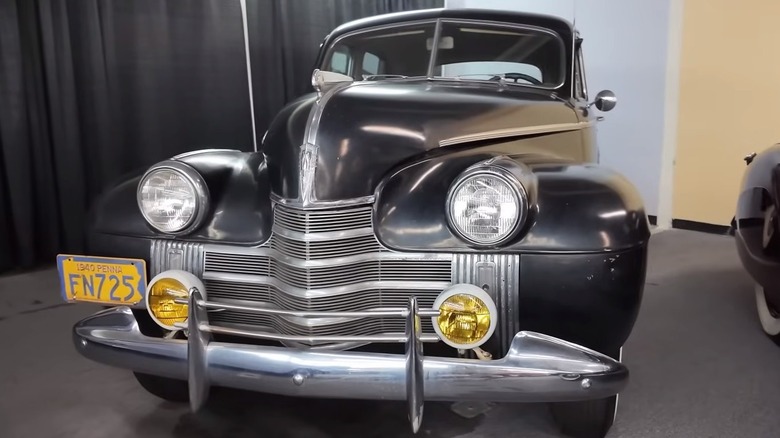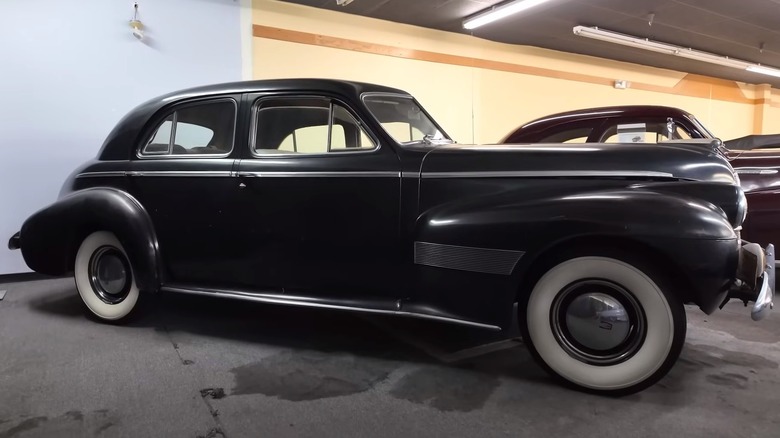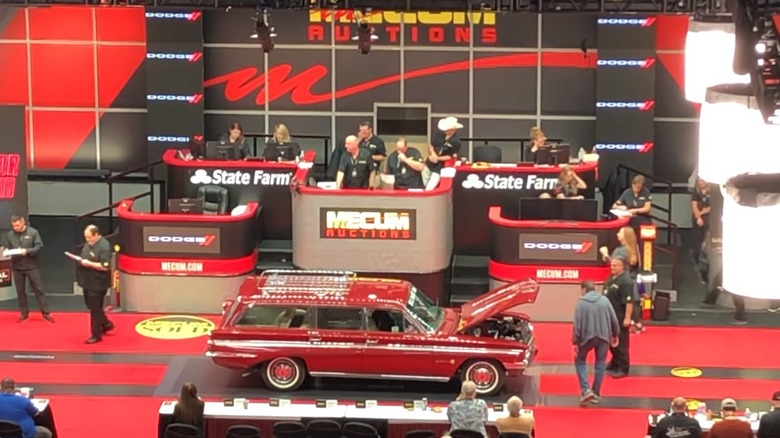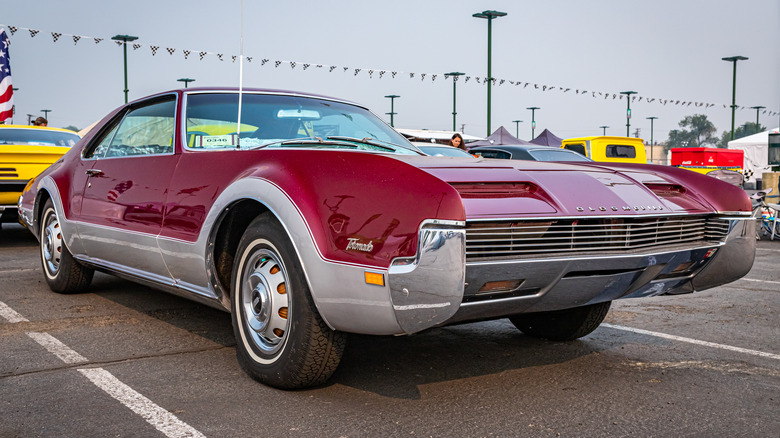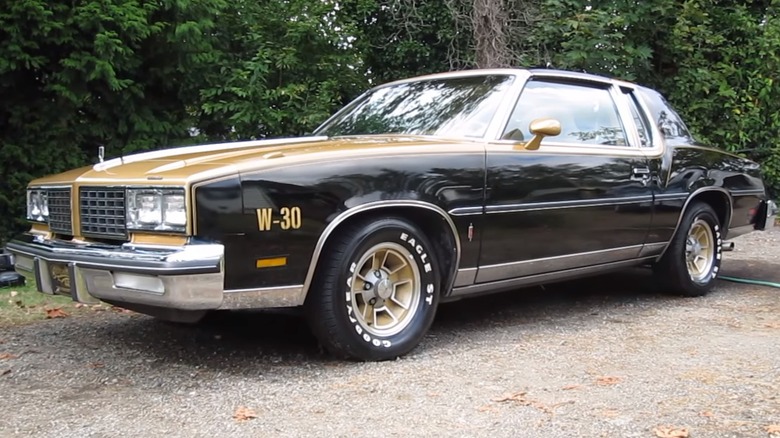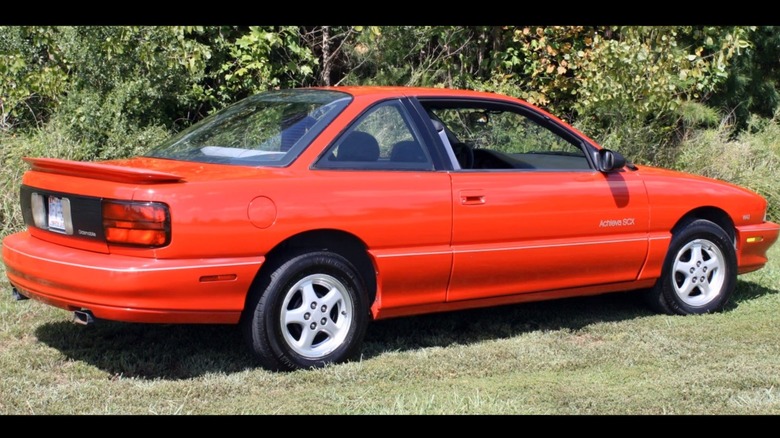5 Classic Oldsmobiles Everyone Forgot About
Few names in the American automotive industry conjure such nostalgia and reverence as Oldsmobile. The brand has crafted unique and memorable cars for over a century. According to J.D. Power, Oldsmobile built upwards of 35.2 million vehicles. While the carmaker had its ups and downs throughout the twentieth century, it contributed substantially to automotive technology, style, and performance. Important moments in the history of Oldsmobile were marked by innovations in design leading up to the 1950s and iconic muscle cars of the 1960s and '70s.
But, for every iconic model like the 1949 Oldsmobile Rocket 88, 1964 Oldsmobile 442, and the 1968 Hurst Olds, several classic models have seemingly vanished from the public consciousness. Even though the influential automaker rolled its last vehicle off the assembly line in 2004 and shut its doors forever, it left a lasting impression. There are many popular examples of what made Oldsmobile a big name in the industry, but also often forgotten cars that, perhaps, didn't get the recognition they deserved.
1940 Oldsmobile Custom 8 Cruiser Series 90
In terms of stylish sedans, the 1940 Custom 8 Cruiser was the closest most Americans could get to a luxury car at the time. This four-door cruiser featured large, rounded fenders, a prominent profile with chrome accents, and larger dimensions than in previous years. It exemplified this decade of automotive design and provided some decent performance for the time. While Oldsmobile advertised the Custom 8 as "America's biggest money's worth," it also could come equipped with a pioneering innovation called the Hydra-Matic Drive.
For only $57, you could get an automatic transmission in your Custom 8 Cruiser, called Hydra-Matic Drive, that purported to transform the vehicle into "the world's simplest, easiest car to operate." There was no clutch or shifter in a car from a major manufacturer for the first time. Considering less than 15% of today's American vehicles offer a manual transmission configuration, according to Progressive, this Oldsmobile was far ahead of the curve.
1962 Oldsmobile F-85 Jetfire Wagon
This classic Oldsmobile was a strange mash-up of robust power and family functionality. The F-85 Jetfire Wagon had a limited one-year run in the early '60s and offered the Jetfire engine, one of the first to incorporate turbo technology. The Jetfire Wagon wasn't the first car to use this innovative performance enhancer; it was a unique variation of the Cutlass that had previously offered the turbo. The Jetfire engine was 215ci and could produce 215 horsepower with 300-pound feet of torque. With all its innovations, it's clear why Oldsmobile's strange F-85 Jetfire engine was way ahead of its time.
It wasn't just the engine that made this Oldsmobile interesting; it was the fact that a five-door station wagon came stock from the factory with hot rod performance baked in. The Jetfire Wagon may have only been produced for one year, but it started a genre that is still seen today. Take, for example, the more recent Dodge Magnum SRT8, a family-friendly wagon with a 6.1-liter HEMI V8.
1966 Oldsmobile Toronado
Before the Toronado became known as primarily a luxury car in its later iterations, it was a performance-oriented fastback. A big block 425ci V8 in Toronado could generate up to 385 horsepower and 475 pound-feet of torque. It offered a three-speed Turbo Hydramatic transmission and was the first front-wheel drive car made since the late 1930s.
The Toronado also featured some unique design decisions that set it apart from other vehicles of the era. The engine is mounted longitudinally, in line with the vehicle's motion, which isn't typically used in front-wheel drive configurations. Most vehicle engines are mounted in a transverse configuration with the weight over the front wheels. On the exterior, the profile includes pop-up headlamps, which would be offered in several vehicles in the following decades until disappearing in the early 2000s. On the back of the Toronado, the rear backup light is integrated into the back chrome bumper for another unique visual touch. The Toronado and several other models of the era are among the most underappreciated Oldsmobile muscle cars.
1980 Oldsmobile Cutlass 442 W-30
The 442 name is synonymous with classic muscle cars of the 1960s and early 1970s, but it didn't fade completely in the subsequent years. Oldsmobile still offered the 442 as a performance package with limited production, like in the 1980 Cutlass 442 W-30. The W-30 came equipped with a small block 350 ci V8 with a Turbo-Hydramatic transmission that made 170 horsepower and 275 pound-feet of torque.
Regarding styling, the color scheme choices were either white and gold or black and gold, which provided a custom look. The W-30 gold decals along the sides and aluminum gold wheels made this Oldsmobile stand out. The interior offered powered features such as the driver's seat and windows. Less than 900 total units were made by the end of 1980, and it has become a rare sight on the roads today. The carmaker wasn't done making a statement in the 80s with the W-30, as just six years later, they would create an Oldsmobile concept car with one of the coolest steering wheels we've ever seen.
1992 Oldsmobile Achieva SCX W41
This seemingly ordinary coupe has an early '90s boxy shape, but don't let looks fool you. The Achieva SCX W41 featured a Quad 4 engine capable of 190 horsepower, track-inspired suspension components, and a stripped-down interior that offered few comforts for weight reduction. The performance-enhanced Achieva came equipped with a 2.3-liter 4-cylinder engine but with the added advantage of a dual overhead cam design, which was the first for the carmaker.
While not reaching the pinnacle of the sports car scene in the '90s, this special edition of the Achieva was rated as the most robust, non-forced induction four-cylinder the automaker had produced thus far. The SCX W41 was the quintessential sleeper car routinely underestimated from appearances alone but could hit 0-60 in less than eight seconds. The SCX W41 certainly wasn't flashy and only came with some understated decals indicating it was the performance version of the Achieva.
